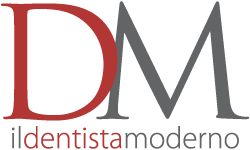Autori
Alessandro Rampello (1)
Alessio Rampello (1)
Fabrizio Panti (1)
Cristina Grippaudo (2)
Carlo Di Paolo (1)
(1) Università Sapienza di Roma – Dipartimento di Scienze Odontostomatologiche e Maxillo Facciali – Insegnamento e Servizio di Gnatologia Clinica
(2) Università Cattolica del Sacro Cuore – Dipartimento Testa-collo e organi di senso – Insegnamento di Ortognatodonzia
Corrispondenza: alessandro.rampello@libero.it
Abstract
Scopo del lavoro è quello di presentare un protocollo nuovo e diverso di gestione del bite nei pazienti affetti da dolori neuromuscolari e disordini temporo mandibolari mediante un bite che coinvolge il paziente a effettuare esercizi orali attivi fisici, cognitivi e rieducativi. Materiali e metodi. Da una serie consecutiva di 536 pazienti con dolori neuromuscolari e disordini temporo mandibolari “TMD”, sono stati selezionati 200 soggetti: 100 per il gruppo controllo (CG) e 100 per il gruppo pazienti (GP). Il (CG) non è stato sottoposto ad alcun trattamento, ma ha ricevuto un calendario ove segnare l’evoluzione spontanea dei sintomi da mostrare ai controlli calendarizzati. Il (GP) è stato trattato solo con un nuovo dispositivo immediato da utilizzare la notte e durante il giorno per eseguire esercizi specifici a domicilio. È stato scelto questo dispositivo perché ha caratteristiche particolari:
1) è universale facile e immediato da utilizzare;
2) non ha ganci, quindi coinvolge il paziente in modo diretto a gestire il bite con la lingua e i muscoli periorali;
3) è un leggero protrusore mandibolo-condilare quindi modifica le leve e le forze muscolari; 4) è poco invasivo e ben tollerato;
5) ha costi contenuti e quindi è bilanciato tra costi e benefici.
Risultati e conclusioni. Nel (GP) è stata ottenuta la remissione dei sintomi più importanti in 94 pazienti, uguale al 94%. Di contro nel gruppo di controllo (CG) i sintomi sono peggiorati in intensità e frequenza in 51 pazienti, 51%, e sono rimasti stazionari in 37 pazienti, 37%, mentre solo 12 soggetti, 12%, hanno riferito un lieve miglioramento. Il nostro studio ha pertanto confermato che il bite è un importante presidio nella terapia dei dolori neuromuscolari e disordini temporo mandibolari, ma soprattutto ha confermato che il bite può essere utilizzato dai pazienti in modo attivo per eseguire esercizi fisici orali cognitivi e rieducativi per stimolare la riorganizzazione dinamico funzionale e probabilmente nel tempo anche la neuroplasticità cerebrale.
Updates in bite’s management in temporo mandibular disorders Aim of the work.
The work aims to present a new and different protocol for the management of the bite in patients suffering from neuromuscular pain and temporomandibular disorders, by means of a bite that involves the patient performing active physical, cognitive, and re-educational oral exercises.
Materials and methods. From a consecutive series of 536 patients with neuromuscular pain and temporomandibular disorders “TMD”, 200 subjects were selected: 100 for the control group (CG) and 100 for the patient group (PG). The (CG) was not subjected to any treatment but was given a calendar in which to record the spontaneous evolution of symptoms to be shown to scheduled checks. The (PG) was treated only with a new immediate device to be used at night and during the day to perform specific exercises at home. This device was chosen because it has particular characteristics:
1) it is universal, easy and immediate to use.
2) it has no hooks, so it involves the patient directly in managing the bite with the tongue and perioral muscles.
3) it is a slight mandibular-condylar protrusor therefore modifies the levers and muscle forces.
4) it is minimally invasive and well tolerated.
5) it has low costs and is therefore balanced between costs and benefits.
Results and conclusions. In the (PG), remission of the most important symptoms in 94 patients, was equal to 94%. In contrast, in the control group (CG) the symptoms worsened in intensity and frequency in 51 patients, 51%, and remained stationary in 37 patients, 37%, while only 12 subjects, 12%, reported a slight improvement. Our study has therefore confirmed that the bite is an important aid in the therapy of Neuromuscular Pain and Temporo Mandibular Disorders, but above all it has confirmed that the bite can be used actively by patients to perform cognitive and rehabilitative oral physical exercises to stimulate reorganization, functional dynamic and probably over time also brain neuroplasticity.
Questo contenuto è riservato agli abbonati a Il Dentista Moderno.
Abbonati e continua a leggere su DM Club, l'area premium de Il Dentista Moderno





